
Struggling with poor cutting performance and high tool costs? Choosing the wrong abrasive tool can slow down your production line and ruin valuable materials, eating into your profits.
The main types of abrasive cutting tools are bonded abrasives, like grinding wheels and cut-off wheels, coated abrasives, such as sanding belts and discs, and superabrasives, which use diamond or CBN for cutting extremely hard materials. Each type is designed for specific applications and materials.

Understanding these basic categories is the first step. It helps you narrow down your options from a massive market. But many buyers I talk to feel overwhelmed, even when they know the category they need. They often look at major brands for guidance because they seem like a safe bet. This brings up a question I hear a lot, especially from new international partners who are used to buying from big names. They want to know how to navigate those huge product catalogs to find exactly what they need. Let’s look at one of the biggest names as an example to understand the selection process better.
How to Choose the Right 3M Industrial Abrasives Products?
3M offers a massive range of abrasives, but this makes choosing the right one difficult. Picking the wrong product can mean wasting money on a tool that underperforms or wears out too quickly.
To choose the right 3M product, you must first identify your workpiece material, your application (like cutting, blending, or finishing), and the desired surface result. Then, match these needs with the appropriate abrasive grain, grit size, and tool form, such as a wheel, disc, or belt.

I’ve been in the abrasives industry for nearly 30 years, right here in Henan, the heart of China’s abrasive supply. I’ve seen how buyers approach this problem. Choosing from a large catalog, whether it’s from 3M or another major brand, boils down to a few key decisions. Let’s break it down to make it simpler.
Understanding the Key Factors
The first step is to stop thinking about the tool and start thinking about your job. What are you trying to achieve? Answering three simple questions will guide you to the right type of abrasive. For us in the factory, we always ask customers these questions before we recommend or manufacture anything. It’s the foundation for getting a good result.
| Factor | Key Consideration | Why It Matters |
|---|---|---|
| Workpiece Material | Is it a hard metal like stainless steel, a soft metal like aluminum, or a composite? | The abrasive grain1 must be harder than the material you are cutting. Using a soft abrasive on hard metal will just wear out the tool instantly. |
| Application | Are you making a fast, rough cut, grinding away a lot of material, or creating a smooth finish? | The tool’s shape, size, and bond are designed for specific tasks. A cut-off wheel is thin for slicing, while a grinding disc is thick for material removal. |
| Desired Finish | Do you need a rough, functional surface or a fine, polished surface? | This is determined by the grit size2. A lower grit number (like 36) is coarse for fast removal, while a higher number (like 400) is fine for polishing. |
Matching Grains, Forms, and an Alternative
Once you know your material and your goal, you can look at the product specs. Big brands like 3M use specific technologies, like their Cubitron™ II grain, which is a type of ceramic aluminum oxide. This grain is very sharp and works great on hard-to-grind metals because it fractures to create new sharp points as it wears. This is a fantastic technology. However, it’s not the only option. In my factory, we have also developed our own high-performance ceramic grains and high-purity corundum that deliver excellent results for many of the same applications. The key is understanding that the type of grain (ceramic, zirconia, diamond) matters more than the brand name on the box.
This is where working with a direct manufacturer can be a huge advantage. As an OEM and ODM partner, we don’t just sell you a product from a catalog. We talk to you about your specific needs. Maybe you need the performance of a premium ceramic grain but on a custom-sized wheel3 that a big brand doesn’t offer. We can do that. Maybe your cost-per-cut4 is too high. We can work with you to find a different material or bond formulation that lowers your cost without sacrificing too much performance.
| Feature | Major Brand (e.g., 3M) | Direct OEM/ODM Partner (like us) |
|---|---|---|
| Cost | Premium price for brand and R&D | Lower cost-per-unit, direct factory pricing |
| Customization | Limited to catalog options | High. Can create custom sizes, shapes, and grit combinations |
| Support | General support through distributors | Direct access to factory engineers and technicians |
| Flexibility | Rigid product lines and specifications | Can adapt formulas and designs for your specific machine or process |
Ultimately, choosing an abrasive is about finding the right tool for the job at the right price. While global brands provide a reliable starting point, a direct manufacturing partner often provides a smarter, more customized, and cost-effective final solution.
Conclusion
Understanding abrasive types and matching them to your material and application is key. Whether you choose a major brand or a direct partner, a clear process ensures efficiency and quality results.
-
Understand the significance of abrasive grain types in achieving desired cutting results. ↩
-
Explore how different grit sizes impact the performance and finish of abrasive tools. ↩
-
Learn why custom-sized wheels can optimize performance and reduce costs in your operations. ↩
-
Discover strategies to lower your cost-per-cut while maintaining high performance. ↩
Written by
leeon
You may also be interested in:
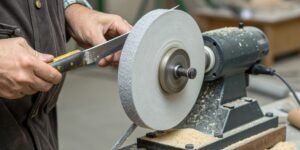
How to use a hard felt bench grinding wheel on knives?
Getting a razor-sharp, polished edge on a knife can be frustrating and slow. A dull knife is dangerous, and using the wrong tool can easily
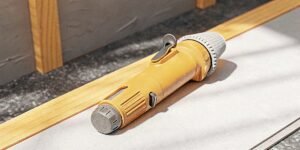
What is the smallest angle grinder?
Finding a grinder for tight spaces is tough. The wrong tool damages your work. Let us guide you to the perfect compact angle grinder for
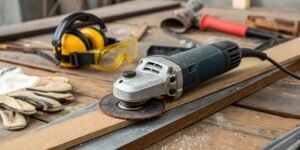
When should you use an angle grinder?
Feeling unsure about which tool to grab? Using the wrong one can waste materials and time. An angle grinder is a powerful, versatile solution for
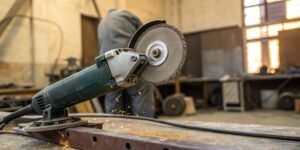
Can I use a bigger disc on an angle grinder?
You have a job to do, but the only disc you have is larger than your grinder. Using it seems like a quick shortcut. But
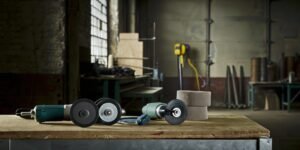
Why Do We Need Grinding?
Your parts don’t meet precision requirements, leading to poor performance and costly rejects. Grinding is the essential final step that delivers the perfection your high-quality
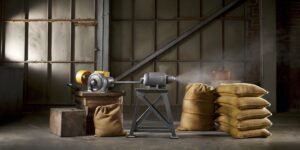
How to find grinding equipment manufacturers and suppliers?
Finding the right equipment supplier is a huge challenge. A bad choice can lead to production delays and wasted money. With a clear strategy, you
